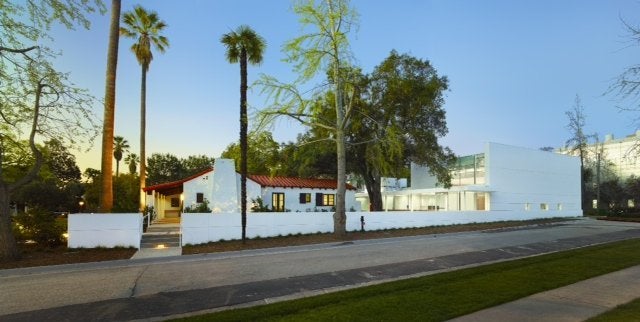Risk is not risk if failure is not a possibility.
Failure is not failure if there is no pain.
We don't just live in good times, we live in beta times, where it seems everybody, at least aspirationally, is a risk-taker, an innovator, a creative, a maker. As an architect -- one who designs -- I, too, am one of these folks.
The romance of risk has huge currency today. But excellence is hard to come by, because...excellence is hard to come by. It is profoundly not business-as-usual. Achieving it is not a no-brainer. It is deeply a brainer.
In the last few years, we have become much more mindful of creativity culture in our own studio and even more so during our work with The Keck Institute for Space Studies at California Institute of Technology. This organization is the embodiment of creativity ethos. It is a scientific creativity think tank whose mission is to explore space in revolutionary new ways. Our work was to breathe that spirit into architecture to create a place of desire that would trump the anxiety of the tension-filled, week long mission-driven creativity sessions.
Our directive was to design a new home for the Keck Institute for Space Studies to define a sense of place, production, and purpose for the academic think tank.
The Keck Institute for Space Studies brings together top-notch scientists, engineers and others from disparate, often clashing, intellectual and professional cultures/silos that normally don't or can't interact; then it psychologically breaks them down and opens them up to allow them to invent and create in awesome and powerful ways together. Professor Tom Prince (Director and former Chief Scientist at the Jet Propulsion Laboratory) and Managing Director Michele Judd are quintessential out-of-this-world thinkers who describe themselves as "managers and orchestrators of creative tension."
A robust sense of groundedness is achieved in the design for the new 4,400-square-foot facility at with seamless indoor-outdoor thinking, schmoozing, being, hyper-functional working space. Massive natural light, the sounds of birds and students, the smell of buds, the oak trees and their shadows, fresh air -- the grounding essence of place -- conspire together to nurture creative fireworks.
Architecture and organizational mission conspire to create a place that is a catalyst to encourage affinity amongst individuals. Affinity to the purpose is created by the affinity to the environment. Architecturally, an association to the existing structure and the existing outdoor landscape is always present and experienced with the new structure.
How did we, and do we, continue to achieve the goal of embracing creative tension? We pay attention to ourselves so that we can go beyond the romance of risk to learn what really works, what hurts, and how we can bring out that creative spark in ourselves and our clients, be they bona fide "creatives" or not. We are attentive to friction and frisson, to silence and the sound of work, to body language, to the creative loss of non-participation and opacity, and to the pleasures of dissonance en route to synthesis.
How do we make it safe to speak and be rejected; as teacher, and as leader of my practice, I look for the loving attack-- a fierce, respectful critique that cuts to the chase -- with a smile, when possible. As an architect friend of mine says, the critic is to be "supporter and saboteur" simultaneously.
People don't easily go to places of discomfort because places of discomfort are uncomfortable. This reality check is quick buzzkill for wannabe creatives. I hate going there, and yet, when finally there -- on virtually every project -- I briefly smile in my pain, knowing that I am positioned to dig deeper and (hopefully) go to new places to achieve excellent outcomes.
We pursue excellence and innovate only in those endeavors when it hurts not to be excellent; when that hurt is even greater than the pain of creation. The challenge for each of us (teacher, parent, leader, professional, human being) and those we love (students, children, colleagues, clients, our communities) is to find, harness, and draw out the creative spark that animates us...and ignite it--necessarily embracing it both its gore and joyous glory.
Michael Lehrer Lecturing on asterRISK
University of Michigan School of Architecture
RISK Conference, 2012
